Dartmoor is the largest and wildest area of open country in the south of England but despite the wildness, the human imprint is never far away. For many years, the moor has been exploited by industry which has shaped the landscape and continues to do so. We walked on the moor recently, and stumbled across surprising traces of Dartmoor’s industrial past and present. Even at our starting point, the car park near where Cadover Bridge crosses the River Plym, there were signs warning of the dangers of a disused china clay pit nearby.
We began by heading up hill towards Cadover Cross. This is one of many Dartmoor Crosses, made of local granite and thought to have been landmarks for travellers in this remote countryside often plagued by bad weather. Cadover Cross may have been associated with important 12th century routes that used the river crossing.
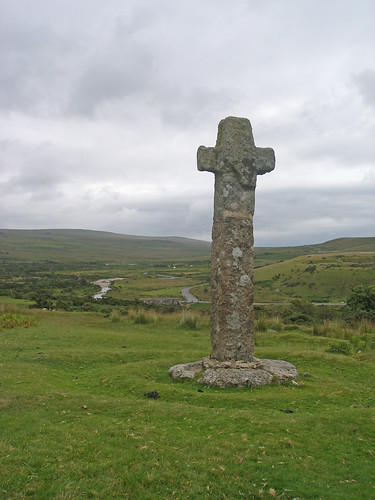
The view downhill from Cadover Cross showing the bridge over the River Plym and wide expanses of open moorland typical of this part of Dartmoor. This was one of the landscapes used by Stephen Spielberg in the Warhorse. The spoil heaps of the disused clay pit are visible on the right.
Leaving the Cross, we continued over scrubby grassland interspersed with bracken and gorse, sharing the route with sheep, a few ponies and one cow. We kept the heavily wooded Plym valley on our left but we could not yet hear the river; the only sound was the gossip of a few passing birds. Eventually we reached the highest point on this walk, Dewerstone Rock, where traces of ancient settlements have been found. From the Rock, there were panoramic views towards the coast with Plymouth Sound clearly visible. On this dull, slightly misty day, it was just possible to make out the Wheel of Plymouth on the Hoe near where, according to popular anecdote, Drake played bowls as the Armada threatened.
Cut in to the rock, and now rather eroded, is the inscription
CARRINGTON
Obit Septembris
MDCCCXXX
This is a memorial to the teacher and local poet Noel Carrington who died in Bath in 1830.
From Dewerstone Rock, we dropped steeply down through oak woods passing the remains of disused 19th century quarries and the bed of a railway that was once used to transport blocks of granite down the hillside. The rails have long gone but the sleepers, regularly placed granite blocks, and the fixing holes in some of the blocks were clearly visible.
Granite forms the bedrock of the high moor and has been used as a building material for as long as humans have inhabited Dartmoor. Many local buildings including Dartmoor Prison and the large church at Widecombe used local granite and the material has also been used in London, notably in the old London Bridge (now in Arizona) and Nelson’s Column.
The path continued in zig-zags through woodland down the side of the river valley. We could hear the river before we could see it but eventually it was there, bubbling over rocks near Shaugh Bridge. This was the half-way point of the walk and a pleasant place for us to eat our sandwiches.
Having crossed the river Plym, we picked up the woodland path back to Cadover Bridge. Now, all around us were traces of a second Dartmoor industry, china clay mining.
China clay was first discovered in the UK in Cornwall in the 18th century, and has been mined continuously on Dartmoor since the mid 1800s. China clay, or kaolin, was originally used to make porcelain but nowadays it is used in many processes including the manufacture of paper, ceramics and toothpaste. Kaolin is a breakdown product of granite and, for many years was mined using powerful jets of water. The water washed out the soft kaolin in a crude mixture with stones, gravel and sand. After the coarse particles were filtered out, the kaolin slurry was put in to huge settling tanks. The compacted kaolin was then dried to produce blocks of china clay for transport.
In this part of the moor, the kaolin suspension was piped more than a mile from the now disused quarry near Cadover Bridge to settling tanks and then to “drys” near Shaugh Bridge. We saw the remains of the “drys” in the National Trust Car Park. In the woods we found the settling tanks and for much of the rest of the walk we followed the ceramic pipeline that carried the crude kaolin suspension. How different this area must have been in the heyday of the granite and china clay industries.
We continued through woodland for a mile or more but were always conscious of the river not far below on our left; its presence reassured us that we were following the correct path. At this time of year, the landscape was mostly green so it was a surprise to come across a clutch of Rowan Trees. Their shocking orange berries will provide welcome food for hungry birds in a few weeks’ time. According to Richard Mabey, the berries, mixed with a few crab-apples, can also be used to make a “sharp, marmaladish jelly, traditionally served with game and lamb”.
Nearby, where springs wet the ground, we found the small purple flowers of Devil’s Bit Scabious. Devil’s Bit refers, in folk tales, to the short black root, bitten off by the Devil angered by the plant’s ability to treat scabies. This seemed appropriate as across the river valley were the Dewerstone Crags or Devil’s Rocks, beloved of climbers; Dewer is the ancient Celtic name for the Devil.
Further on, the path dropped down to meet the fast flowing river, a perfect place for Dippers. On cue, one of the plump, chocolate-brown birds was there, standing on a rock, bobbing up and down, proudly displaying his white waistcoat while the water flowed swiftly past. We watched until the Dipper decided to leave and then we walked the short distance back to the car.
This walk comes from “Dartmoor, Great short walks for all the family”, by Sue Viccars, Crimson Publishing, 2009.
Thanks go to Hazel Strange for the lovely photos.


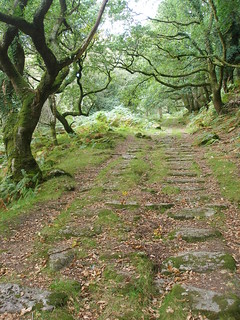
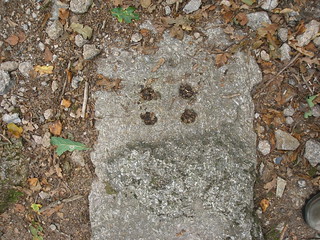
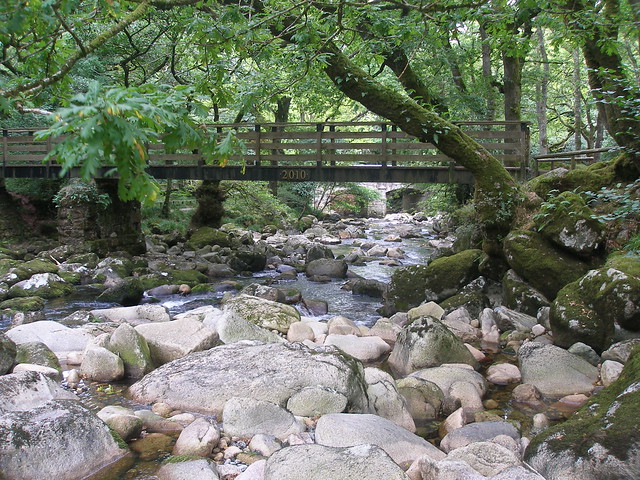


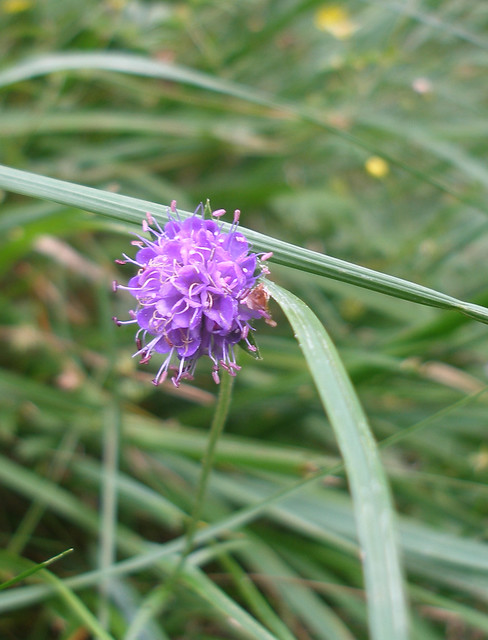

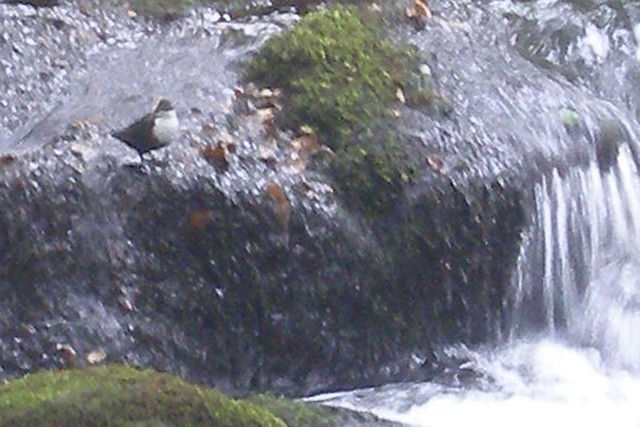
What a wonderful account, Philip. Dartmoor is a place I wish I was better acquainted with; I spent quite a few summer vacations in Torquay and Paignton, not so very far away. I don’t recall any family rambles across the moors though.
The history of the clay business is interesting – I had no idea. That pipeline is quite the thing, much smaller in diameter than I was imagining while reading your post. Nice that parts of it are extant.
Thanks Richard. Fascinating to hear that you spent summers in Torquay and Paignton, towns very close to Totnes where I now live. Do you have family connections?
I agree that the diameter of the pipeline is quite small and I have no explanation. They went to the trouble of piping the clay slurry all that way to take advantage of a railway station for transport.
What I find difficult to imagine when I am walking through these woods, which are basically leisure oriented now, is how different the woods must have felt when all this industry was on the go.